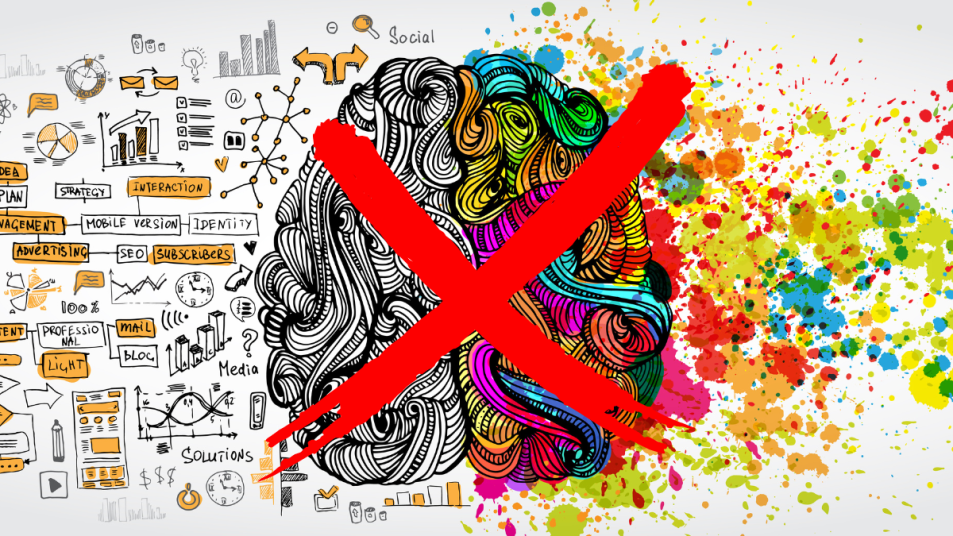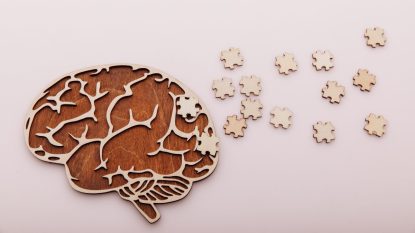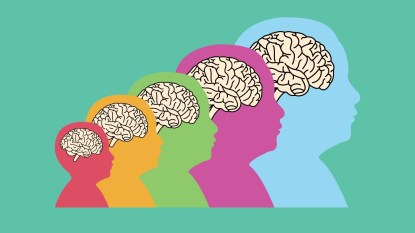The Left Brain / Right Brain Myth Is Made Up — Here’s the Real Truth About Your Logic and Creativity
It's time to see yourself as both.

While it might seem like we have a good grasp on the human brain, there is a lot we still don’t know. We have come a long way — Ancient Egyptians thought the brain was useless, and Aristotle theorized that it helped keep the heart cool — but we now recognize the brain as the most complex part of the body. However, disproven theories still frame our modern understanding of this organ. Here’s one: The left brain is responsible for logic, and the right is for all things creativity.
This theory has led to the belief that some of us are left-brained thinkers (you lead with your head) while others are right-brained (you lead with your heart). Yet new research supports the idea that we use our whole brain all of the time. Plus, pigeon-holing yourself as left or right-brained could limit your perspectives and cognitive abilities. Here’s why.
Where the Left-Brain vs. Right-Brain Theory Came From
In the mid-1900s, a surgeon named Joseph Bogen found that separating the left hemisphere from the right alleviated epilepsy in his patients. (No other treatments were working for these patients.) He called these patients “split-brained patients”, and he divided their brains at the corpus callosum, a C-shaped structure made of white matter and nerve pathways, which connects the hemispheres.
Dr. Bogen noticed that his split-brained patients had interesting mental capabilities, and encouraged his colleague, a psychobiologist named Roger Sperry, to conduct non-invasive experiments with them. The results were fascinating: In one experiment, Sperry and his team displayed images to the split-brained patients’ right eye. The patients could easily describe the images. But when the researchers showed the patients’ left eye images, the patients could not describe them. (In fact, some patients said they hadn’t seen anything at all.) The takeaway? Sperry showed the left hemisphere to be logical, analytic, quantitative, rational, and verbal, and the right hemisphere to be conceptual, holistic, intuitive, imaginative, and non-verbal. For his research, Sperry received the Nobel Prize in medicine in 1981.
Why This Theory Isn’t Accurate
Modern-day research does not support the idea that the two hemispheres are so cleanly divided in their tasks. “Having personally researched both brain function and creativity for the same 20 years, I have concluded that creativity is a mental process utilizing all of the brain’s specialized capabilities,” Ned Herrmann, researcher and author, wrote in the Scientific American in 1999. “It is, therefore, ‘whole brained’ … The role of the right hemisphere is essential to the creative process. But it supplies only a quarter of the thinking needed to realize the full creative process.”
In addition, Dr. Federmeier, a professor of psychology at the University of Illinois, told NPR that “it takes two hemispheres to be logical — or to be creative.” And though damage to the left hemisphere can cause difficulties producing language (as seen in stroke patients), the right hemisphere isn’t necessarily non-verbal. “My laboratory studies the hemispheres’ ability to comprehend (rather than produce) language. We, like others, have shown that both hemispheres can figure out the meaning of words and sentences — and that they have differing strengths and weaknesses when it comes to comprehending,” she added.
What This Means for You
You may have always thought of yourself as one or the other — logical or creative, left-brained or right-brained. However, it’s time to start seeing yourself as both. Telling yourself that you’re only good at creative activities may lead you to avoid logic-based activities, which are excellent for brain health. The opposite is also true; avoiding creative pastimes like playing musical instruments or dancing means you’re letting go of important brain exercise.
So, get outside of your comfort zone. Try a navigation challenge to improve your logical thought processes, or re-decorate your home on a budget to boost your creative thinking skills. As long as the activity you pick is challenging, you’ll be exercising your brain and boosting your cognitive health.













